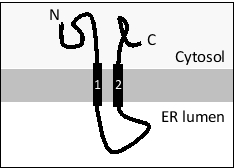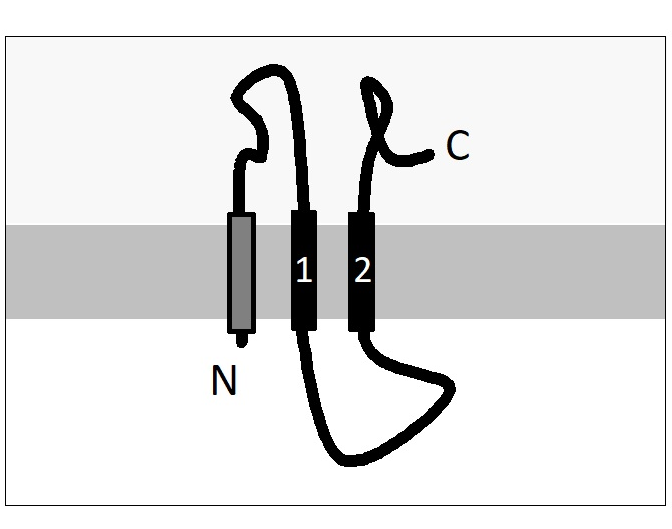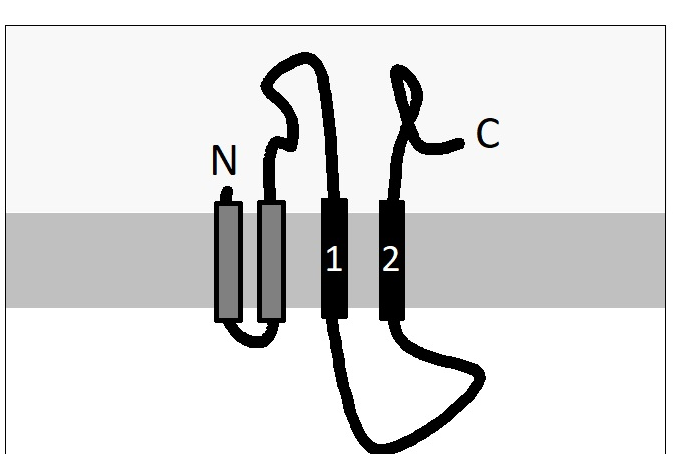Multiple Choice
Consider a transmembrane protein with the following topology that has an internal signal sequence (helix 1) . If you fuse a canonical ER signal sequence at the N-terminus of this protein, how would you expect the topology to change? The ER lumen is at the bottom in all drawings. For simplicity, assume that the effect of charged residues flanking the transmembrane helices is negligible in this case. 
A) 
B) 
C) 
D) 
E) 
Correct Answer:

Verified
Correct Answer:
Verified
Q34: According to the model for nuclear transport
Q35: Indicate true (T) and false (F) statements
Q36: The following diagram depicts the topology of
Q37: Indicate whether the C-terminus (C) or the
Q38: Sort the following events as they occur
Q40: Indicate true (T) and false (F) statements
Q41: Indicate whether each of the following transport
Q42: Consider a human cell such as a
Q43: Imagine a protein that has been engineered
Q44: Indicate true (T) and false (F) statements